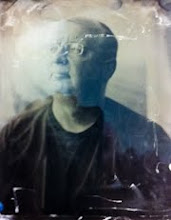Title: "The awakening of curiousity"
(click on image to view larger)
In his book Creativity, Mihaly Csikszentmihalyi writes about indicators of future creativity in childhood. Children cannot be creative because by definition creativity involves changing a way of thinking or doing things, which first requires mastery of the old or conventional ways. Children can of course show tremendous talent, and if there is a concordance between that early talent and what they go on to become known for in later life, we have a tendency to mistake that early talent for creativity. As an example, Csikszentmihalyi cites Mozart: as a child Mozart was a piano prodigy, but it was only after he learned conventional music and learned about composition that his creativity was born. So what is the best indicator in childhood of the potential to go on to a creative life? It is a prodigious curiousity, which may or may not be on the subject that a person ultimately becomes creative in. It's a need in the child to explore and understand some part of the world around her or him. It makes sense that prodigious curiousity is an indicator of creativity, since being creative involves understanding the world by changing our way of thinking about it. And it makes sense that art is a natural outlet for creativity because it provides a way to express new thinking about the world.


No comments:
Post a Comment